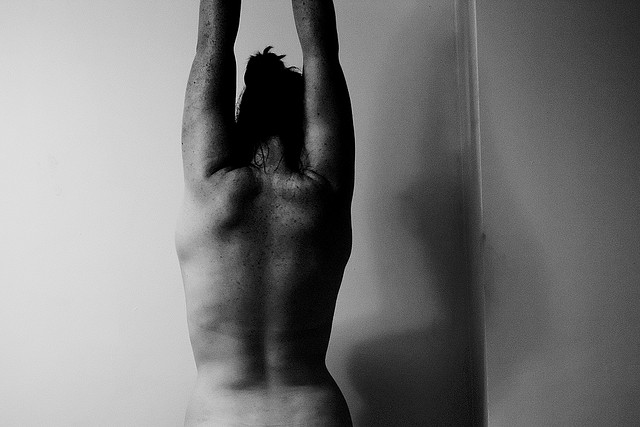During my yoga teacher training, we were immersed in everything yoga—over 12-hour days, for 11 days straight.
Theory. Pranayama. Asana. Meditation. The Eight Limbs. Chakras.
Soul searching and journaling, followed by hands-on-assists. An emotional death meditation followed by anatomy lessons.
The very first night, as a kind of ice-breaker, we sat in a circle, and took turns introducing ourselves. We each were instructed to share, with our new tribe of 30: our name, something interesting about ourselves, and something truly embarrassing about ourselves that we would never want anyone to find out. A secret.
Alrighty then…Disconcerting, but in the grand scheme, no big deal. I had plenty of mildly embarrassing things that I could pretend I didn’t want anyone to know. And, as I sat, selecting my “secret,” others began disclosing their stories. And the stories were heavy.
Each speaker was as surprised by the secrets spilling out of their loosening lips as the circle was to be hearing them. Scandalous, humiliating secrets that each of us had long-ago planned to take to our individual graves. Stories we’d hidden from the world for so long were suddenly finding their way out of us, releasing themselves into the center of our little circle.
The air was thick with shame and tears—then, relief and solace. (And, yes, I shared mine, too.) That was when we all realized why a dozen tissue boxes were scattered around the floor.
We went through a lot of tissues in 11 days.
We heard childhood stories of abuse and neglect and molestation. We heard the resulting adulthood stories of addiction and eating disorders and domestic violence. Issues with body dysmorphia and self-loathing and toxic shame.
Metric tons of unthinkable trauma and pain. Exhaustion from continually appearing like we had our sh*t together.
This wasn’t just an ice-breaker. We went through all this for a reason. To teach us to be authentic and real and raw as teachers. To enable us to teach our students as equals. To understand that all of them—like all of us—had their baggage.
We had to be able to teach from a place of empathy and compassion.
As the days went on and we moved into the more physical aspect of teaching yoga, we dove into hands-on-assists. Before practicing, we discussed the reasoning behind putting hands on people. We were given lots of reasons. To help them go deeper into a pose, correct alignment, and prevent injury.
We were taught to stand behind someone and span their ribs with our hands so they could better feel the depth of their breathing. We held their waists and hips. We stroked their spines. We leaned our bodies into theirs to support them as we held their leg up by the thigh. And no, not all assists were this intimate—but a lot were.
We were instructed to help students slide their shoulder blades down and together by pinching the skin over their upper back and moving it where it should go.
Yes. “Pinch their back fat.” That is what we were told. We were instructed to place a hand on their belly and softly say, “Pull your belly in.” Now, who doesn’t love that, right?
But, as we began, a more outspoken woman than me asked the exact question screaming in my head, “But, what if someone doesn’t want to be touched? I mean, if somebody puts their hand on my belly and tells me to pull it in, I feel self-conscious and fat.” Someone else agreed, “Yeah, I don’t want anybody pinching my back fat!”
The teacher’s response was “Why would anyone feel that way? Nobody should feel that way!” But, to assume that none of our students would or should be bothered by being touched was to take all that empathy we had been armed with and simply set it on the shelf.
We’d been taught to see ourselves, each other, and each future student as a whole. Each of them potentially having experienced any or all of the hurt that each of us had confessed to on our first night in training. If, during our immersion, at least one third of the students confessed to battling, at some point in their lives, with sexual trauma or eating disorders, what about the general population? Were we the only ones with baggage? It might be safe to assume that a lot of people don’t want to be touched. Not on their belly—not anywhere.
In this, I saw the safe and necessary connection between student and teacher potentially being broken.
Every single one of us needs the benefits of yoga. And, people with long-term baggage and traumatic experiences need it as much as anyone—if not more. Yoga, when taught in a safe and sensitive environment, and combined with other therapeutic modalities, is an evidence-based, empirically validated method of treatment for people working through any and all types of post-traumatic stress disorder.
And, one of the first and most important guidelines in teaching trauma-sensitive yoga is no touching. No hands-on assists.
As yoga teachers, we have a responsibility to start from a place of assuming that everyone in our classes might have issues, so as not to exclude the people who need yoga the most. So, how can we still instruct everyone thoroughly and make sure they are feeling what we want them to feel? And, how do we keep them safe?
With clear and simple language. By carefully demonstrating with our own bodies. By explaining why we recommend they turn their foot toward the front and not out to the side or why we might put a little micro-bend in a knee in another pose. Not just telling them to do it, but explaining why. By asking, “Where are you feeling this pose?” and suggesting movement or adjustment to change the dynamic.
And, if you really have to touch people, have post-it notes available at the door to the yoga room for people to put on their mats to alert the teacher not to touch them. Simple. Everyone’s comfortable.
By acknowledging and understanding the potential for anyone to have issues they’re dealing with, we create a safer space for everyone to practice.
And, as teachers, isn’t that ultimately what we want to do?
~
Relephant read:
On Sexual Assault, Survivorship & the Physical Intimacy of Assisted Practice.
~
Author: Amy Bradley
Image: Emily/Flickr
Editor: Khara-Jade Warren
Copy Editor: Danielle Beutell
Social Editor: Danielle Beutell











Read 7 comments and reply